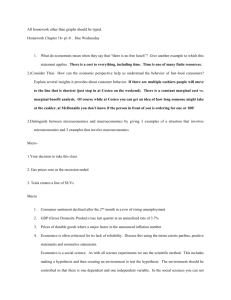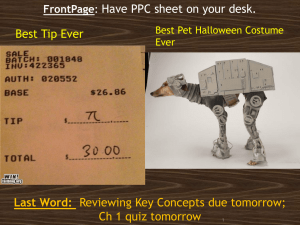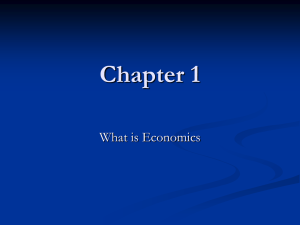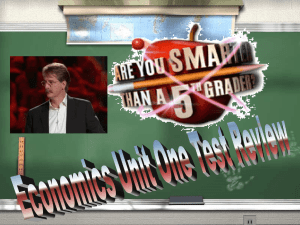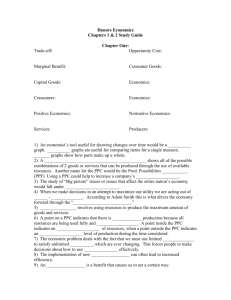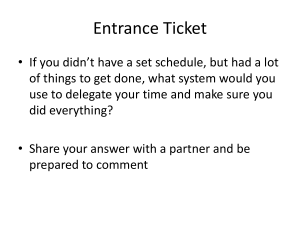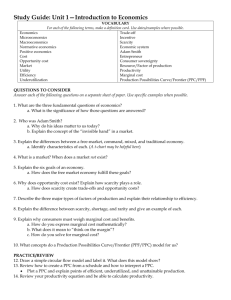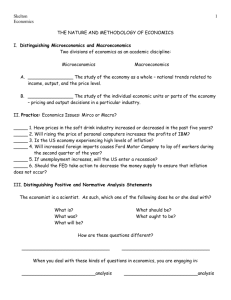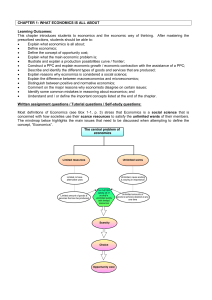Introduction to Microeconomics
advertisement
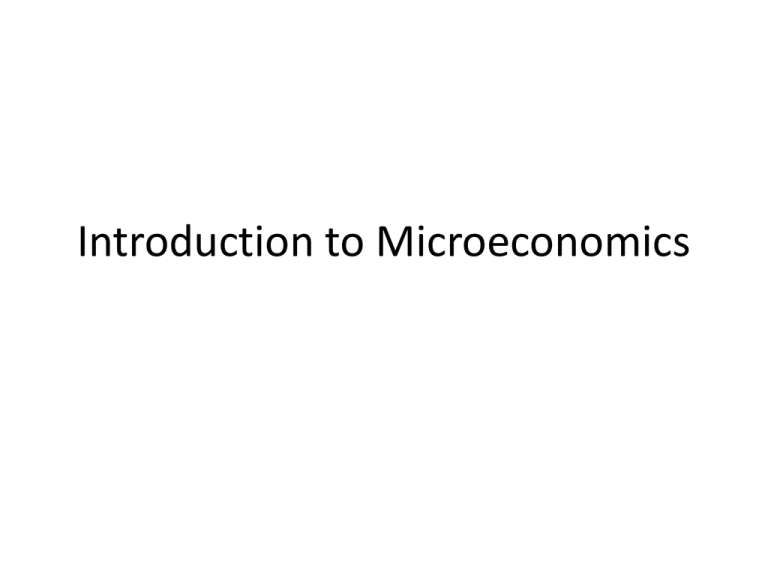
Introduction to Microeconomics Why Study Economics? • Economics is the study of how individuals and societies choose to use the scarce resources that nature and previous generations have provided. • How to deal with limited resources in a society of unlimited wants Opportunity Cost • Opportunity cost is the best alternative that we forgo, or give up, when we make a choice or a decision. • Opportunity costs arise because time and resources are scarce. Nearly all decisions involve trade-offs. Marginal= Additional • In weighing the costs and benefits of a decision, it is important to weigh only the costs and benefits that arise from the decision. • For example, when deciding whether to produce additional output, a firm considers only the additional (or marginal cost), not the sunk cost. Efficiency • An efficient market is one in which profit opportunities are eliminated almost instantaneously. • There is no free lunch! Profit opportunities are rare because, at any one time, there are many people searching for them. Types of Efficiency • Productive Efficiency• Products are being produced in the least costly way. • This is any point ON the Production Possibilities Curve • Allocative Efficiency• The products being produced are the ones most desired by society. • This optimal point on the PPC depends on the desires of society. Micro vs. Macro • Microeconomics is the branch of economics that examines the functioning of individual industries and the behavior of individual decision-making units—that is, business firms and households. • Macroeconomics is the branch of economics that examines the economic behavior of aggregates— income, output, employment, and so on—on a national scale. Normative vs. Positive • Normative economics, also called policy economics, analyzes outcomes of economic behavior, evaluates them as good or bad, and may prescribe courses of action. • Positive economics studies economic behavior without making judgments. It describes what exists and how it works. Ceteris Paribus • A variable is a measure that can change from observation to observation. • Using the ceteris paribus, or all else equal, assumption, economists study the relationship between two variables while the values of other variables are held unchanged. • The ceteris paribus device is part of the process of abstraction used to focus only on key relationships. Pitfalls • In formulating theories and models we must avoid two pitfalls: – The Post Hoc Fallacy: It is erroneous to believe that if event A happened before event B, then A caused B. – The Fallacy of Composition: It is erroneous to believe that what is true for a part is also true for the whole. Theories that seem to work well when applied to individuals often break down when they are applied to the whole. Factors of Production PPC • Production Possibilities Curve • A model that shows alternative ways that an economy can use its scarce resources • This model graphically demonstrates scarcity, trade-offs, opportunity costs, and efficiency. 4 Key Assumptions • Only two goods can be produced • Full employment of resources • Fixed Resources (Ceteris Paribus) • Fixed Technology Production Possibilities Curve Impossible/Unattainable (given current resources) A B G Bikes C Efficient D Inefficient/ Unemployment E 0 2 4 6 8 10 Opportunity Cost 1. 2. 3. 4. 5. Moving from a to b Moving from b to d Moving from d to b Moving from f to c Describe point g Constructing PPC A B C D E CALZONES 4 3 2 1 0 PIZZA 0 1 2 3 4 More PPC • Law of Increasing Opportunity Cost• As you produce more of any good, the opportunity cost (forgone production of another good) will increase. • Why? Resources are NOT easily adaptable to producing both goods. • Result is a bowed out (Concave) PPC When does the PPC shift? 3 Shifters of the PPC – 1. Change in resource quantity or quality – 2. Change in Technology – 3. Change in Trade • Hope you took good notes!!! http://quizlet.com/11605256/apmicroeconomics-introduction-flash-cards/
